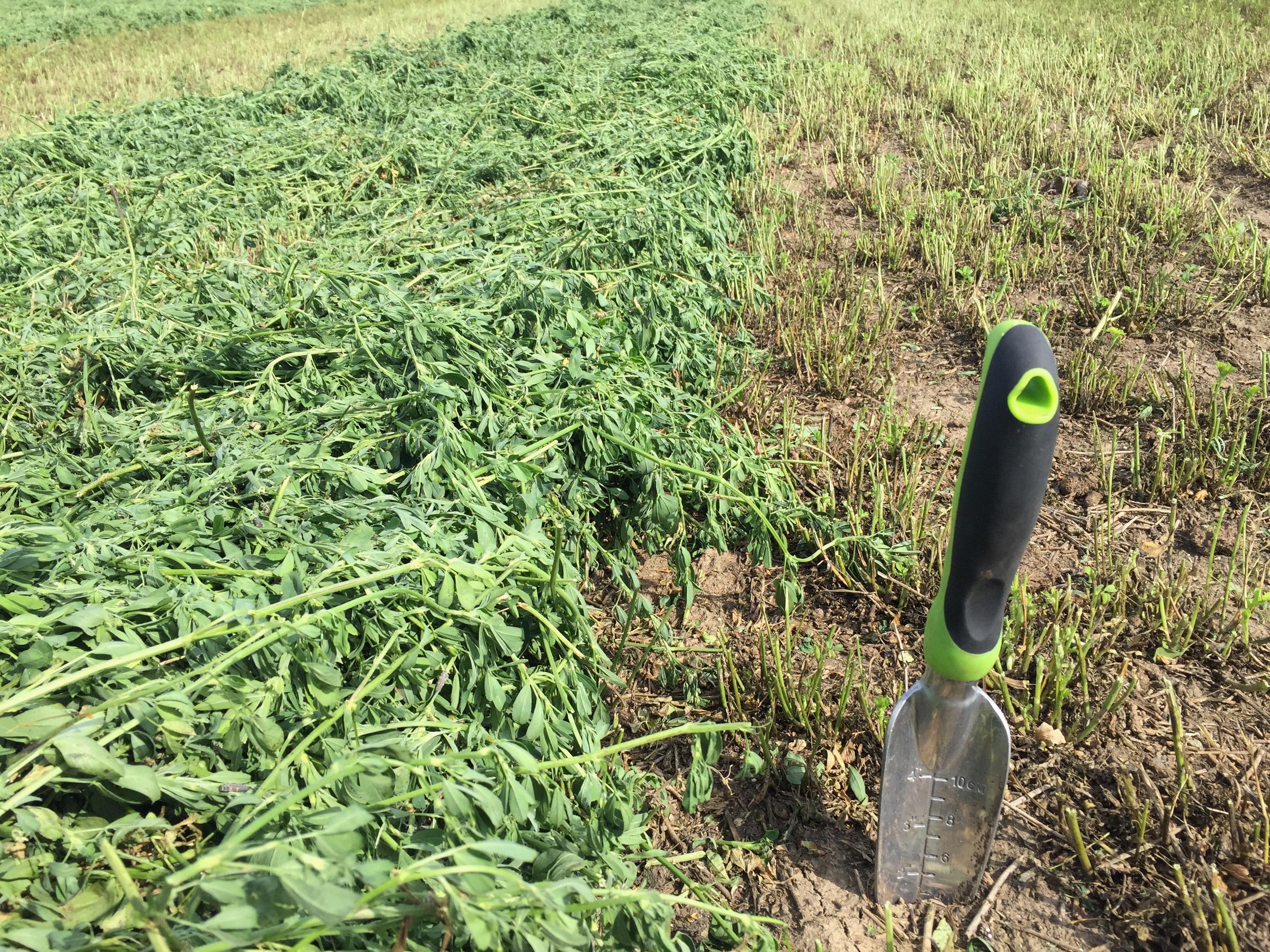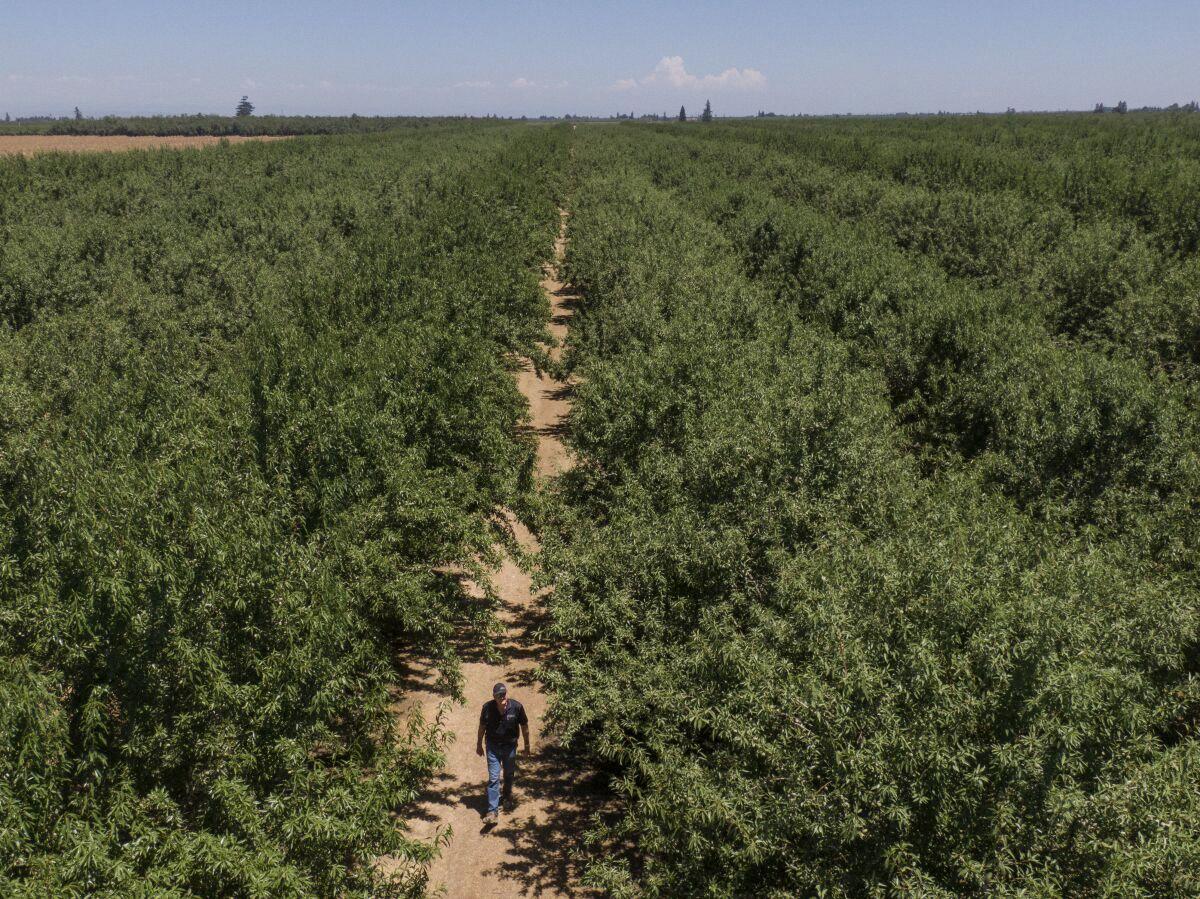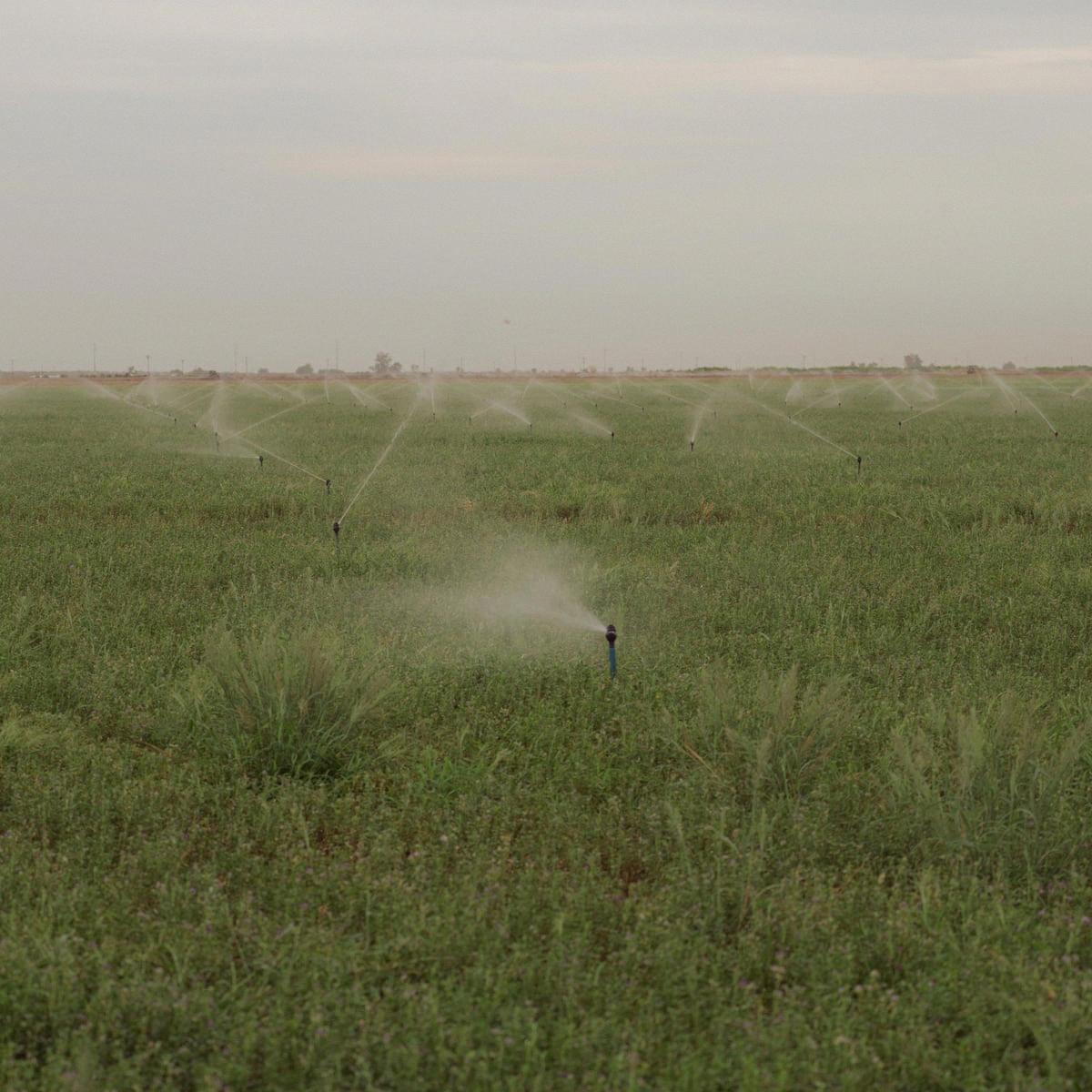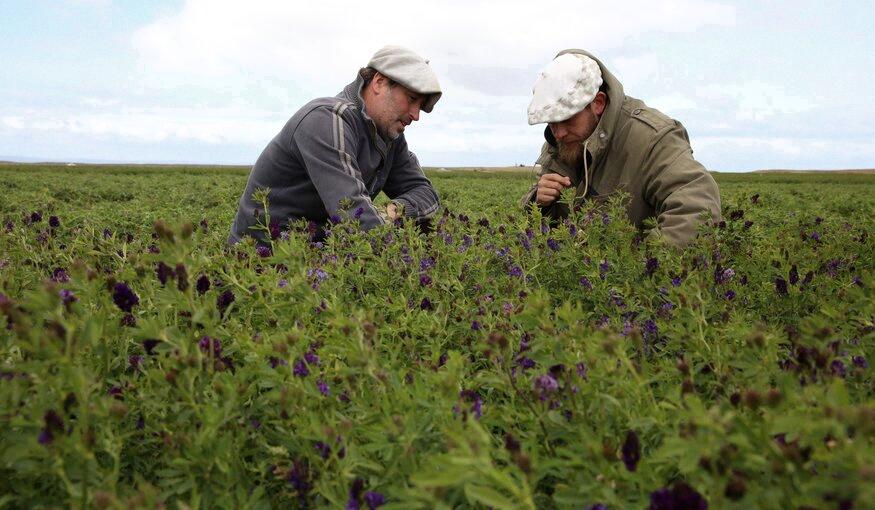Alfalfa is a highly valued forage crop that is grown in many parts of the world. It is known for its high protein content, digestibility, and ability to fix nitrogen from the atmosphere. Farmers and ranchers use it as a source of feed for their livestock, and it is also commonly used in hay production.
One of the questions that many people have about alfalfa is whether it grows back every year. The answer is yes, but with some caveats.
Alfalfa is a perennial plant, which means that it can live for several years. However, it is not a self-seeding crop. This means that when an alfalfa plant dies, it does not produce new plants from its seeds. Instead, farmers need to replant alfalfa fields every few years to ensure that thee is a healthy and productive stand of plants.
When an alfalfa field is planted, the plants will grow for several years before they start to decline in productivity. This is due to a combination of factors, including disease pressure, insect damage, and natural aging of the plants. Over time, the density of the stand will decrease, and the yield and quality of the forage will decline.
To maintain a healthy and productive alfalfa stand, farmers will typically rotate their fields. This means that after a few years of growing alfalfa, they will plant a different crop in the same field for a year or two before returning to alfalfa. This helps to reduce disease pressure and improve soil health, which in turn helps to promote healthy alfalfa growth.
In addition to rotating their fields, farmers can also use a process called “renovation” to maintain a healthy alfalfa stand. Renovation involves tilling up the old alfalfa plants and replanting the field with new seed. This can help to improve the density of the stand and extend its productive life.
While alfalfa does not grow back from its own seeds every year, it is a perennial crop that can live for several years with proper management. By rotating their fields and renovating their stands, farmers can ensure that they have a healthy and productive source of forage for their livestock.
Lifespan of Alfalfa
Alfalfa can remain productive for a considerable period of time, typically from four to ten years or even more. However, as the plant population begins to decline, it becomes necessary to undertake renovations. This is because the plants may become less productive due to disease, insect damage, weed competition, or other factors. Renovation involves replacing the existing stand with new plants to ensure continued productivity and yield. Therefore, while alfalfa can be productive for many years, it is essential to monitor its health and undertake renovations as necessary to maintain optimal production.

Source: croptechcafe.org
Does Alfalfa Self-Reseed?
No, alfalfa does not reseed itself. Unlike some other crops, alfalfa does not produce seeds that can be used to grow new plants. Instead, it relies on farmers to plant new alfalfa seeds each growing season. This is why alfalfa fields can sometimes become less dense over time if new seeds are not planted regularly. In fact, planting more alfalfa into current alfalfa fields is not recommended due to alfalfa’s autotoxicity characteristics. To maintain a good population/density of alfalfa, it’s recommended to aim for about 35 well-growing stems per square foot.
Can Alfalfa be Regrown After Cutting?
Yes, alfalfa can grow back after cutting. However, the time it takes for regrowth depends on the maturity of the plant at the time of cutting. It takes about 40 days for alfalfa to develop the ability to regrow from the crown after cutting. If the plant is cut before this point, it needs at last one set of leaves remaining to regrow. Therefore, it’s essential to cut high if you need to cut early for something like weed or insect control. This way, the plant can regrow quickly and efficiently from the remaining leaves. Overall, alfalfa is known for its ability to regrow and is a popular crop for hay production, grazing, and soil improvement.
Consequences of Not Cutting Alfalfa
If you don’t cut alfalfa, it will continue to grow taller and eventually become too mature for optimal feed value. The plant will go into a reproductive stage and start producing flowers, whch will lead to a decrease in leaf-to-stem ratio and an increase in lignin content. This means that the plant will become less digestible and lower in nutritional quality.
As the plant continues to mature, it will also become more susceptible to insect pests and diseases, which can further reduce yield and quality. In addition, if the weather turns dry and hot, the plant may become stressed and stop growing altogether, leading to a further decline in quality and yield.
Overall, not cutting alfalfa can have negative consequences for both yield and quality, and it’s important to cut it at the right time to maximize its value as a feed crop.
When is the Optimal Time to Cease Cutting Alfalfa?
If you want to ensure the optimal yield and quality of your alfalfa crop, it’s important to know when to stop cutting it. Generally, you shuld stop cutting alfalfa 5-6 weeks before the anticipated killing frost in your area. This is because alfalfa plants need time to accumulate enough carbohydrates and nutrients to survive the winter and regrow in the spring.
The exact date of the killing frost can vary depending on your location and climate, but average killing frost dates can be found for most regions. For example, in the United States, the average killing frost date ranges from late September to mid-October in most areas.
To determine the exact deadline for your area, subtract 5-6 weeks from the average killing frost date. This will give you the latest date you should cut your alfalfa to allow for sufficient regrowth and winter survival. Cutting alfalfa too late can result in weakened plants that are more susceptible to winter injury and disease.
In conclusion, the best time to stop cutting alfalfa is 5-6 weeks before the anticipated killing frost in your area. This will give your alfalfa plants enough time to accumulate nutrients and carbohydrates to survive the winter and regrow in the spring.

Source: latimes.com
How Often Should Alfalfa Be Cut Per Year?
Alfalfa is a popular forage crop that is harvested multiple times a year. The number of times alfalfa is cut per year depends on several factors, including the growing conditions, the desired yield, and the forage quality. However, the most common practice is to make four cuts per year, which is often referred to as a “4 summer-cut system.” The first cutting is usually harvested at the late-bud to first-flower stage, which typically occurs in late May or early June, depending on the location. Subsequent cuttings are then made at 32-to-35 day intervals until late August or early-September. This system is considered the optimal compromise for higher forage quality and dry matter yield of alfalfa. However, in some regions where weather conditions are favorable, it is possble to make up to six or seven cuts per year. Nonetheless, it is important to note that frequent harvesting can cause stress to the alfalfa plant, reducing its lifespan and productivity. Therefore, it is crucial to balance the number of cuts with proper management practices to ensure the long-term health and productivity of the crop.
Will Alfalfa Survive the Winter Season?
Yes, alfalfa plants are able to survive winter and can continue to grow the following spring. This is because they have developed a natural mechanism to adapt to cold temperatures and harsh winter conditions. As the temperatures drop and days become shorter, alfalfa plants undergo physiological changes that increase their hardiness. For example, they produce more sugars and accumulate more soluble proteins, which act as natural antifreeze agents to protect the plant’s cells from freezing. Additionally, the plant’s root system becomes deeper and more extensive, allowing it to access water and nutrients from deeper in the soil. While increased hardiness can lead to reduced yield potential, it is important for a high dollar perennial forage like alfalfa to have a stand year after year. With proper management and care, alfalfa plants can survive winter and continue to povide a valuable source of forage for livestock and other animals.
The Best Crop to Plant After Alfalfa
When it comes to selecting the best crop to plant aftr alfalfa, there are several factors that must be considered. Alfalfa is a leguminous crop that fixes nitrogen in the soil, making it a great option for improving soil fertility. However, once alfalfa is harvested or reaches the end of its life cycle, it is important to plant a crop that can continue to nourish the soil and provide a substantial yield.
In general, cereal crops and annual forage grasses are considered to be the best rotational crops to plant after alfalfa. Small grains like oats, wheat and barley can greatly benefit from the nitrogen that is released after the alfalfa is plowed. These crops can also help to suppress weeds and prevent soil erosion.
Corn and sorghum are also good options to plant after alfalfa, particularly in areas with adequate rainfall or where irrigation is available. These crops are known for their high yields and can help to maintain soil health by providing organic matter and nutrients.
It is important to note that the best crop to plant after alfalfa will depend on a number of factors including soil type, climate, and available resources. Farmers should carefully consider their specific needs and goals when selecting a rotational crop, and may want to consult with a local agronomist or extension agent for additional guidance.
Does Alfalfa Go Dormant During the Winter?
Yes, alfalfa goes dormant in the winter. During this time, the above-ground portion of the plant dies back and turns brown, whle the roots and crown of the plant remain alive and dormant. This dormancy period is triggered by the shorter days and cooler temperatures of winter, which cause the plant to conserve energy and prepare for the warmer months ahead. While the plant is dormant, it is important to monitor for potential winter injury risks, such as ice sheeting, snow mold, or heaving, which can damage the roots and crown of the plant and reduce yield in the upcoming growing season.

Source: theguardian.com
The Continual Growth of Alfalfa
Yes, alfalfa is a perennial plant that can keep growing as long as it is properly managed and maintained. In fact, when the soil fertility is in the proper balance with high levels of calcium and phosphorus and low levels of potassium, alfalfa can grow continuously withut blooming at a certain height like it used to. This is because alfalfa requires a lot of nutrients to grow, and when these nutrients are available in the soil, the plant can continue to produce new growth and leaves. Proper irrigation and cutting techniques can also help to promote continued growth and yield in alfalfa. However, it’s important to note that like all plants, alfalfa has a growth cycle and will eventually go dormant during the winter months.
The Spreadability of Alfalfa
Yes, alfalfa does spread. Most alfalfa seedings initially have a high plant density of 15 or more plants per square foot. As the stand ages, some plants die and the remaining plants spread to occupy the space. The spreading of alfalfa is caused by the rhizomes, whch are underground stems that grow horizontally and produce new shoots at each node. This spreading helps to maintain high productivity in pure stands with three or more plants per square foot. Additionally, the spreading of alfalfa can also help to improve soil health by fixing nitrogen and increasing organic matter content. Overall, the spreading of alfalfa is a natural process that helps to maintain the productivity and health of the stand over time.
The Benefits of Alfalfa in Soil Replenishment
Yes, alfalfa is an excellent soil amendment that can help to replenish lost nutrients in the soil. Alfalfa contains a high amount of nitrogen, whch is an essential nutrient for plant growth. When alfalfa is added to the soil, it breaks down slowly, releasing nitrogen over time. This slow release of nitrogen helps to prevent the fertilizer burn that can occur with other quick-release nitrogen fertilizers.
In addition to nitrogen, alfalfa also contains other important nutrients such as calcium, magnesium, sulfur, Manganese, iron, copper, boron, and zinc. These nutrients are all essential for plant growth and can help to improve the overall health of the soil.
Alfalfa is also known for its ability to improve soil structure. As it breaks down, it creates a network of tunnels in the soil that helps to improve water and air circulation. This improved soil structure can help to prevent soil erosion and can also encourage the growth of beneficial microorganisms in the soil.
Overall, alfalfa is an excellent choice for replenishing soil and improving soil health. It is a natural and organic option that can provide long-lasting benefits to your garden.
Feeding Cows Straight Alfalfa
Yes, cows can be fed straight alfalfa hay, but it is not recommended to do so as the high protein content in alfalfa can cause digestive problems for cows if not balanced with other nutrients. Feeding straight alfalfa hay can lead to an imbalance of calcium and phosphorus in the diet, whch can result in urinary calculi (stones) in male cattle. Additionally, alfalfa hay is typically more expensive than other types of hay, so it may not be cost-effective to feed straight alfalfa to cows. It is recommended to consult with a veterinarian or livestock nutritionist to develop a balanced diet for cows that includes a variety of forages and other feedstuffs to meet their nutritional needs.

Source: croptrust.org
Should Alfalfa Be Allowed to Flower?
Yes, it is recommended to let alfalfa flower at last once a year, preferably at the early bloom stage, which is around 10 percent bloom. Allowing the plant to reach this stage will ensure that it has accumulated enough root carbohydrates, which are essential for the plant’s survival and regrowth. If you cut alfalfa before it has a chance to flower, you may be depriving it of this vital nutrient source, which can result in decreased yields and overall plant health. Additionally, allowing alfalfa to flower can also provide benefits for pollinators, such as bees, which rely on these flowers as a food source. So, in conclusion, it is generally recommended to let alfalfa flower at least once a year to ensure the plant’s health and provide benefits for pollinators.
At What Age Should Rabbits Stop Eating Alfalfa Hay?
Rabbits typically stop eating alfalfa hay at around four to five months old. This is because alfalfa is a high-protein hay that is suitable for growing rabbits who require a lot of nutrients. However, as rabbits reach adulthood, they require less protein and more fiber in their diet. This is why it is recommended to slowly phase out alfalfa hay and introduce grass hay as the primary source of roughage.
It is important to note that the transition from alfalfa to grass hay should be gradual, and it is recommended to start swapping out alfalfa for grass hay at around six months old. Additionally, the amount of pellets given to adult rabbits should also be reduced, with a recommended amount of 1/4 cup of pellets per day for eery five pounds of weight. By providing a balanced and appropriate diet, rabbits can maintain good health and ensure a long, happy life.
Conclusion
In conclusion, alfalfa is a highly productive and valuable forage crop that can remain productive for several years. However, as time passes, plant density tends to decrease, and renovation becomes necessary. It is essential to maintain the optimum population density of 35 well-growing stems per square foot to ensure maximum yield and quality. Alfalfa has autotoxicity characteristics, making it unsuitable for reseeding into current alfalfa fields. Cutting alfalfa before it develops the ability to regrow from the crown can result in reduced yields and quality. Therefore, it is recommended to cut high if early cutting is necessary. Additionally, alfalfa’s productivity and feed vale decline as it continues to mature and lose leaves due to insect feeding, diseases, and old age. Overall, proper management practices are crucial to maintaining a productive and quality alfalfa crop.
